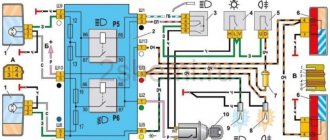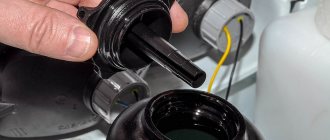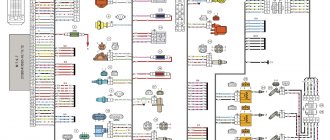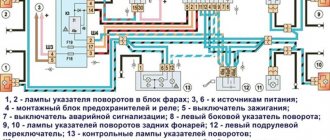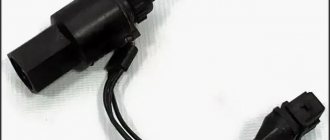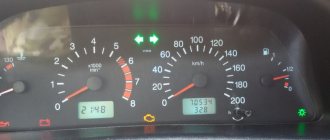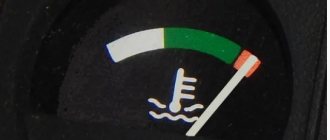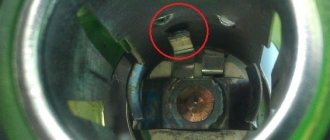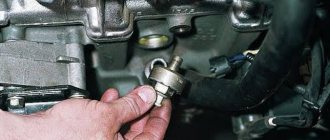What does the electrical circuit of a VAZ-21213 or, in other words, Niva (carburetor) look like? This question worries mainly those owners who are trying to independently repair any element that has become unusable.
In reality, the circuit contains almost a hundred components and devices, so in this article we will only talk about individual electrical circuits that most often fail.
Circuit breakers
The block of protective devices in Niva is a board on which disposable fuses are installed, containing a fuse inside. Each of them protects one or more electrical circuits from overvoltage.
The unit is located in the cabin on the left side. Protective equipment is numbered. So, 1 is responsible for the work:
- windshield washer;
- stove fan;
- cleaners for all headlights;
- heating, wiper and washer for tailgate glass.
Description
The electrical equipment of the Niva 2121 is made according to a single-wire circuit: the negative terminals of the sources and consumers of electricity are connected to the “ground” - the body and main components of the car, which act as the second wire. The on-board network of the Niva 2121 is DC with a rated voltage of 12 V. When the engine is not running, all consumers are powered by the battery, and after the engine starts, by an alternating current generator with a built-in rectifier and electronic voltage regulator. When the generator is running, the battery is charged.
Most electrical circuits are protected by fuses . The electric motors of the VAZ 2121 gearmotors (windshield wipers, tailgate glass, headlights - if installed) are protected by automatic reusable bimetallic fuses. The power supply circuit of the injection system is protected by a fuse-link made of wire with a conductor of reduced cross-section (1 mm2). The battery charging, ignition, engine starting, and “generator – ignition switch – fuse box” circuits are not protected. Powerful consumers (starter, headlights, electric motors Niva 2131 cooling system fans, electric fuel pump, etc.) are connected via a relay.
Dashboard
All control devices are interconnected. This combination consists in particular of:
- speedometer;
- tachometer;
- coolant temperature indicator;
- 12 indicator lamps;
- battery charge sensor;
- fuel level indicator.
All of them are located on the panel.
The schematic diagram shows the combinations available on the instrument panel:
- tachometer (1);
- stabilizer (2);
- panel illumination (3);
- coolant heating indicator (4);
- gasoline level (5);
Warning lamps:
- toxicity reduction systems (6);
- heated luggage door glass (7);
- fog lights (8);
- high beam (9);
- outdoor lighting (10);
- turn signals (11);
- TG level (13);
- oil pressure (14);
- differential locks (15);
- fuel reserve (16);
- seat belts (17);
- parking brake (18).
D1, D2 are diodes (type IN4002).
Cars manufactured before 1996 also have a voltmeter (12 in the diagram).
Finally, there are two resistors:
- R1 – at 470 Ohm (0.25 W);
- R2 –51 Ohm, (5 W).
Electrical diagram of VAZ 21214 with central fuel injection
| 1. “CHECK ENGINE” indicator light; 2. Instrument cluster (fragments); 3. Electric fans of the engine cooling system * ; 4. Electric heater for the intake pipe; 5. Air temperature sensor; 6. Absolute pressure sensor; 7. Coolant temperature sensor; 8. Block connected to the throttle position sensor; 9. Central fuel injection unit; 10. Block connected to the idle speed regulator; 11. Block attached to the nozzle; 12. Diagnostic block; 13. Controller; 14. Knock sensor; 15. Speed sensor; 16. Oxygen concentration sensor; 17. Adsorber; 18. Battery; 19. Main relay; 20. Engine control system fuse block; | 21. Relay for turning on the electric fuel pump; 22. Relay for turning on the electric fan * ; 23. Relay for turning on the electric heater of the inlet pipe; 24. Electric heater protection fuse; 25. Starter activation relay; 26. Ignition relay; 27. Main car fuse box (fragment); 28. Spark plugs; 29. Tachometer; 30. Electric fuel pump with fuel level sensor; 31. Ignition module; 32. Crankshaft position sensor; 33. Courtesy light switch located on the driver's door pillar; 34. Control unit of the automobile anti-theft system **; 35. Automotive anti-theft system status indicator ** ; |
Replacement.
To remove the DS, you need to place the car on a level surface. After this, it is best to disconnect the battery terminals to avoid errors in the BC.
Disconnect the wire terminals; to do this, press the plastic lock on the block. After this, use a wrench to unscrew the sensor from its seat. If you cannot unscrew it immediately, it is not recommended to use excessive force. You need to treat the threaded connection with WD-40, wait a few minutes and continue dismantling.
Installation of a new DS is carried out in the reverse order. When purchasing a new part, you need to pay attention to the external condition: the contacts must be treated with a sufficient amount of varnish, as this protects them from moisture. After completing the work, it is necessary to reset the on-board computer errors in order to remove the CHECK ENGINE error.
Also interesting: Chevrolet Niva fan does not turn on
As for its location, look for the DS in the engine compartment in close proximity to the exhaust manifold. To be honest, the place where it is installed cannot be called ideal. While the car is running, the manifold heats up. The sensor wires rub against it, which over time leads to malfunctions and short circuits.
It doesn’t matter whether you have an injection car or a carburetor with a Europanel - the connection of the speed sensor to the instrument cluster is identical.
Replacing the VAZ speed sensor: step-by-step instructions:
- Drive into the pit - it will be more convenient to work from below - and wait until the engine cools down.
- Turn off the vehicle's power by removing the cable from the negative terminal of the battery. Do not close the hood after this, this will provide you with lighting.
- Locate the speed sensor on the transmission. Clean it and everything near it with a rag to remove any dirt.
- By pressing the spring clip, disconnect the wire block from the sensor.
- Dismantle the sensor itself by unscrewing it counterclockwise - with your fingers or an open-end wrench to “22”.
- Carefully, so as not to break anything, install a new part in place of the removed part. Connect the wire block to it and the procedure for replacing the speed sensor can be considered complete.
How to properly connect a new DS? It is important here that the device rod fits correctly into the fixing sleeve, otherwise rotation will not be transmitted to the sensor. If the sensor fits into the socket the first time, then everything is in its place, and if something prevents it from moving, then the rod did not fit into the bushing.
VAZ 2121 dashboard: eliminating defects
In its original version, the VAZ 2121 instrument panel is no longer available. Despite this, most car owners believe that its design and arrangement of functional elements significantly outperform modern modifications.
The main defects of the very first variation of the instrument panel that owners of the VAZ 2121 encounter arise as the car is used.
First of all, these include deformation and cracking of the plastic body of the dashboard, the formation of progressive chips near the sockets of instruments and levers.
Taking into account the fact that in modern sales it is almost impossible to find the original dashboard from the Niva 2121 in a condition close to ideal, car enthusiasts resort to independent repairs and modernization of the design.
The most effective, but labor-intensive solution in the case of eliminating visual defects of the dashboard is treating cracks with a composition that prevents the destruction of plastic, followed by covering the panel with a suitable material - artificial leather, leather, carpet, carbon-look vinyl film. If the cracks have become quite large, you can try to completely eliminate them by installing additional devices and equipment in the defective area.
A more radical method involves completely replacing the car's instrument console. For replacement, car enthusiasts use both the dashboards of modern VAZ models and parts of some foreign cars - for example, rare Volkswagen models.
Dismantling and disassembling the old VAZ 2121 console involves performing the following steps:
- disconnect the negative terminal from the battery;
- remove the upholstery of the wind window pillars, the steering column casing, and the instrument panel;
- disconnect the wires of electrical appliances;
- remove the instrument lighting switch;
- remove the storage shelf;
- disconnect the wires from the receiver, cigarette lighter, headlight washers, hazard warning buttons and windshield wipers;
- remove the glove box;
- remove the handles of the heater valve and air supply levers;
- unscrew the 4 mounting screws connecting the dashboard to the car body;
- remove parprise.
Installation of a new dashboard is performed in the reverse order.
Installation of a dashboard (panel) from a foreign car on a VAZ 2110
| Over time, the interior of the car becomes boring and you want to update it somehow. More often, a feeling of satisfaction comes after minor changes to the interior, for example, painting plastic, replacing the steering wheel or radio. If you are not satisfied with this tuning, try replacing the VAZ dashboard with a panel from a foreign car. |
There are many topics on the Internet about installing dashboards from foreign cars on VAZ 2101-07, 2109-99 and even Moskvich 2141. As a rule, the panels are borrowed from old BMW models (E36) or Opel Vectra, and they fit Russian cars with virtually no modifications. Installing a dashboard on a VAZ 2110 from a foreign car will not be easy; you will have to redo it, adjust it, trim it, so many say that it is easier to buy a new car. “The eyes are afraid, but the hands are doing”, here is one good example of such an installation, when a panel from a Volkswagen Passat (B5), which was produced from 1996 to 2005, was installed on the “ten”. The panel was received without covers, a glove compartment, plastic sides, a light control module and other things that had to be purchased later. It’s worth noting right away that the process of replacing the dashboard itself will take a lot of time. If you can remove the original panel of the “tens” in a working day (instructions), then installing a panel from a foreign car will take several times more time and effort, and this is primarily due to adjustment, local modifications, etc. So, the Volkswagen torpedo underwent a little trimming and adjustment, after which it was in the right place. The next stage is finishing the stove. Here it was decided to use the Finnish dignity. a unit that served as air ducts to the left and right parts of the dashboard. xn--2111-43da1a8c.xn--p1ai
Maintenance Tips
The factory instructions require troubleshooting the ignition system in the following sequence:
- From the ignition switch (terminal 15), connect the wire to the coil (terminal +B) to a test lamp;
- Connect its negative terminal to ground;
- Turn on the ignition - turn the key in the lock to position “II”;
- If the control lamp lights up, then the circuit is working. If not, look for damage to the wire;
- With the ignition on, pull out the central wire from the coil from the distributor;
- Bring its metal tip to the cylinder block so that a gap of 3-4 mm forms between them;
- Turn on the starter for a few seconds;
- If the spark jumps, the coil is working.
Tip: you can quickly check the switch in one way - take it from a working car. If the car starts with the new switch, then you need to buy a new one.
Transfer case in VAZ 21213 NIVA
